Waterwise outside, oasis inside a walled Sonoma garden
Last August a family road trip took me through Sonoma, California, where I had the pleasure of seeing a garden I was writing about for Garden Design magazine. The owner, Marilyn Coon Stocke, had generously extended an invitation to me and my family, and so we stopped by after a visit to Cornerstone Sonoma and its gardens.
My earlier phone interview with Marilyn had been mainly about the garden inside the courtyard walls, which she’d hired landscape architect Mike Lucas to build to block the wind and provide privacy from the road. But as we approached her garden gate, I was wowed by the waterwise exterior garden. Blazing orange flower spikes of kangaroo paws towered over tuffets of chartreuse lomandra. Both plants hail from Australia and are water thrifty and heat tolerant, allowing Marilyn to focus limited water resources on her interior courtyard garden.
By the parking area, a tumbleweed-like sphere of barbed wire makes a sculptural, Wild West-style accent.
How I wish we could successfully grow kangaroo paws here in Austin! Alas for our sauna-like summers.
Majestic Weber’s agaves punctuate a meadowy front garden of lomandra and tall verbena.
Large cutout windows in the white walls of the courtyard offer peek-a-boo glimpses of the secret garden inside. A barn-door-style shutter can slide closed to keep out the wind.
Eucalyptus and bottlebrush (Callistemon) add more Australian foliage.
Inside the courtyard, a sheltered, green oasis greets you, and a trough-style water feature flanked by an elevated terrace leads to the front door.
A bisecting path frames a view of the trough’s scupper fountain through towering agapanthus blossoms.
The agapanthus flowers were nearly spent by early August but still lovely.
To the right you see steps leading up to the front door, and a row of ‘Livin’ Easy’ rose standards.
The apricot-orange roses echo the orange of the kangaroo paws outside the wall.
Boston ivy traces green-leaved tendrils across the white walls, making a green frame for the window views.
And what a view through this window! I love seeing that big Weber’s agave flexing its muscles amid purple salvia, with a row of eucalyptus trees and golden hills beyond. In the foreground, a firepit and built-in seating offer a reason to stay a while.
Opposite the window, the firepit axis leads straight out of the courtyard and through an allee of ornamental pear trees, which reference the property’s history as a pear orchard.
As a focal point at the end of the allee, a water feature made from a manganese rock crusher — essentially a giant dish — bubbles gently. From here, the garden proper ends, and the path leads to the wilder parts of the property and, eventually, to a borrowed view of a neighbor’s vineyard. Ah, the beautiful Sonoma wine country.
My thanks to Marilyn for the tour of her lovely home and garden! It was a treat to meet her too. If you’d like to read more about her garden, just get your hands on a copy of the Winter 2018 issue of Garden Design and look for my article on page 54.
P.S. Marilyn’s home and garden fortunately escaped damage from the Sonoma wildfires last fall, which I was relieved to hear.
I welcome your comments; please scroll to the end of this post to leave one. If you’re reading this in a subscription email, click here to visit Digging and find the comment box at the end of each post.
_______________________
Digging Deeper: News and Upcoming Events
Calling all garden bloggers! You’re invited to register for the annual Garden Bloggers Fling tour and meetup, which will be held in Austin this May 3rd-6th! Click this link for information about registering, and you can see our itinerary here. Space is limited, so don’t delay. The 2018 Fling will be the event’s 10th anniversary, which started in Austin in 2008.
Join the mailing list for Garden Spark Talks! Inspired by the idea of house concerts, I’m hosting a series of garden talks by inspiring designers and authors out of my home. Talks are limited-attendance events and generally sell out within just a few days, so join the Garden Spark email list for early notifications. Simply click this link and ask to be added.
All material © 2006-2018 by Pam Penick for Digging. Unauthorized reproduction prohibited.


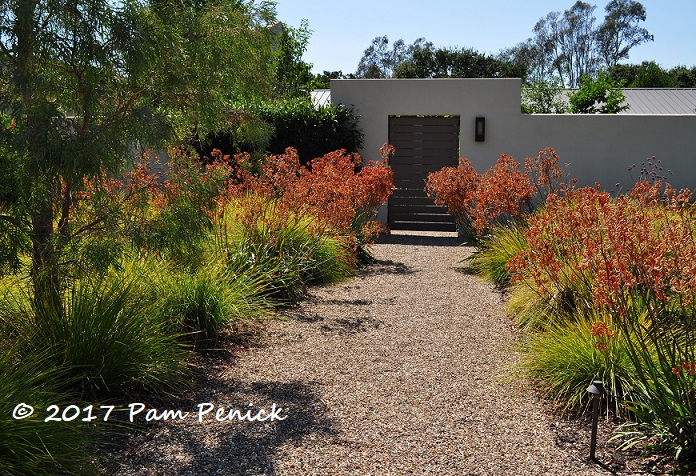
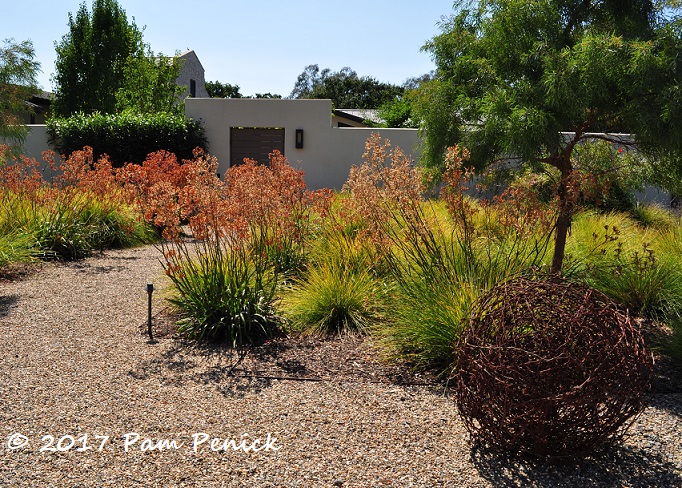
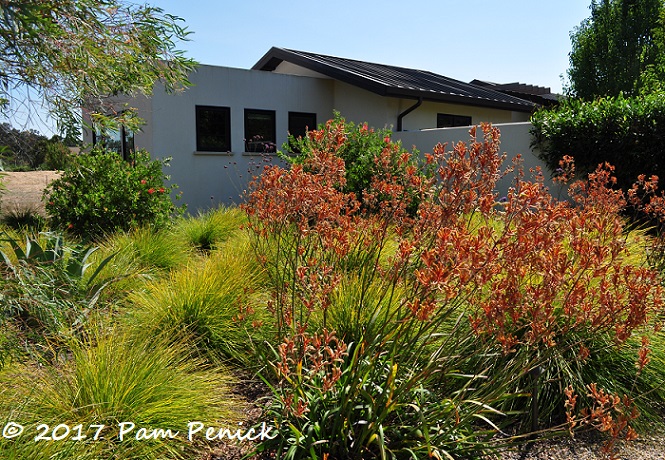
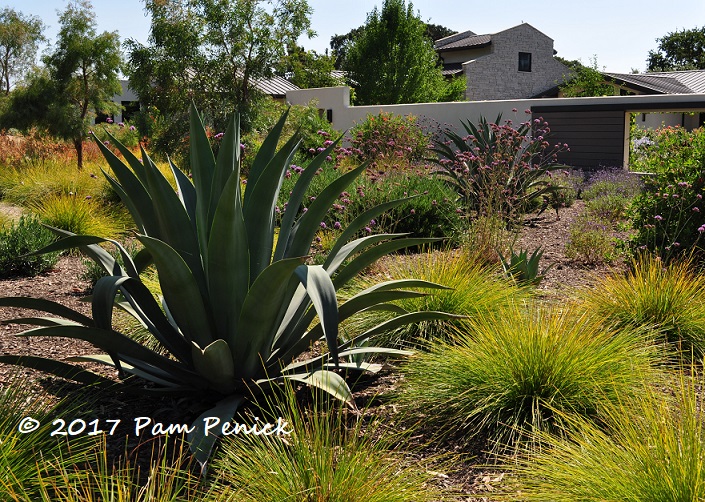
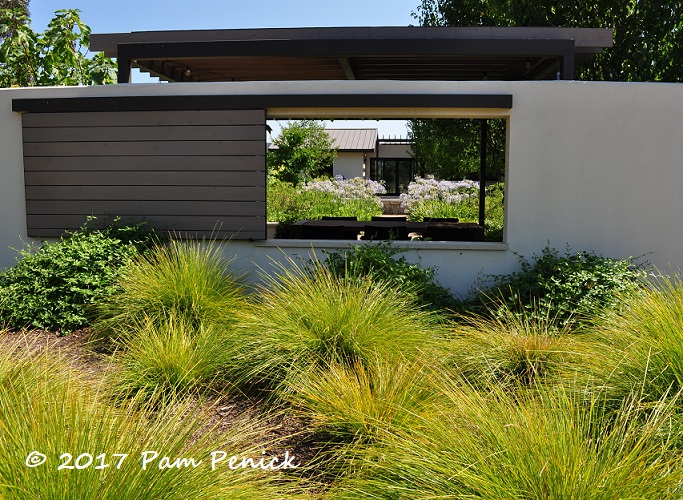
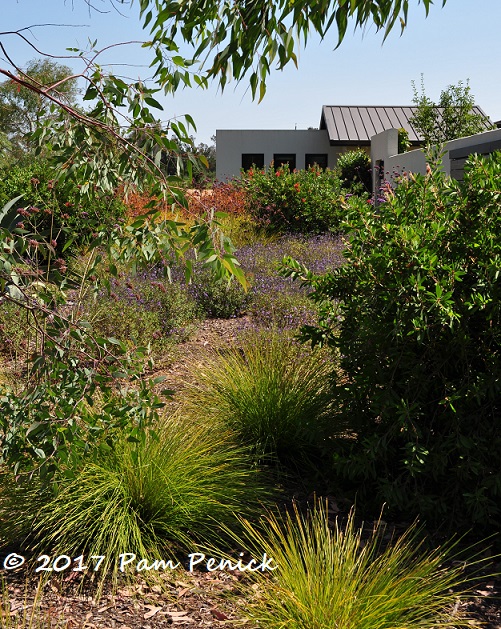
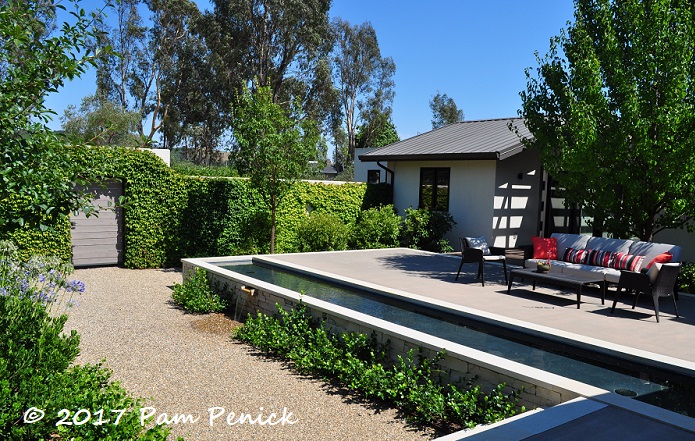
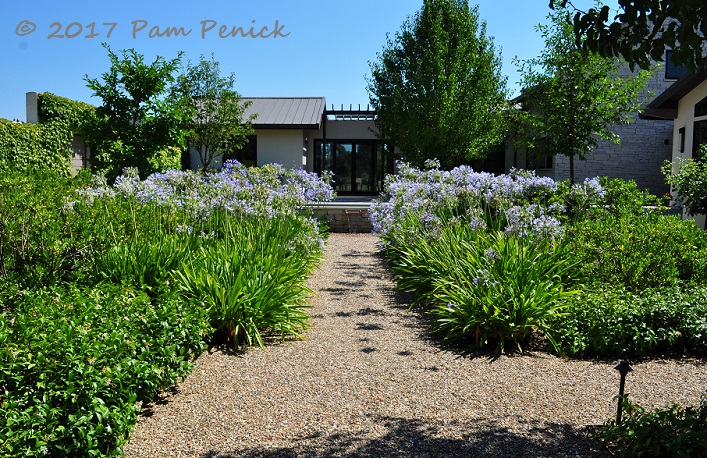
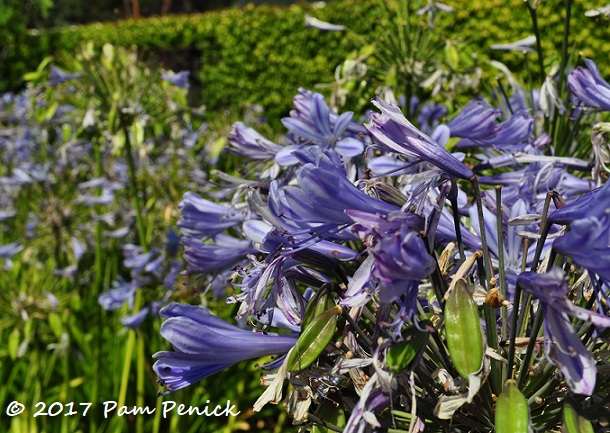
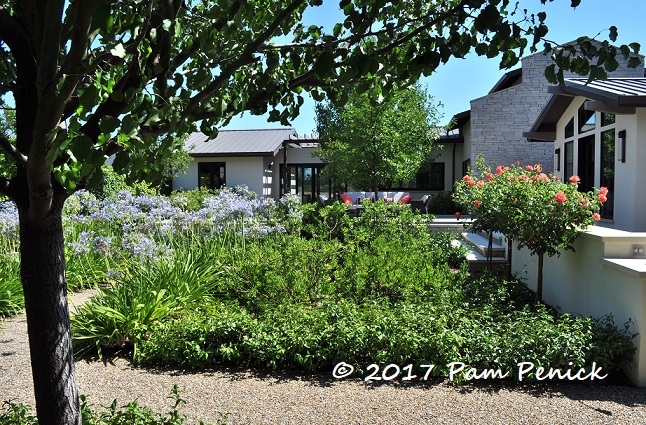
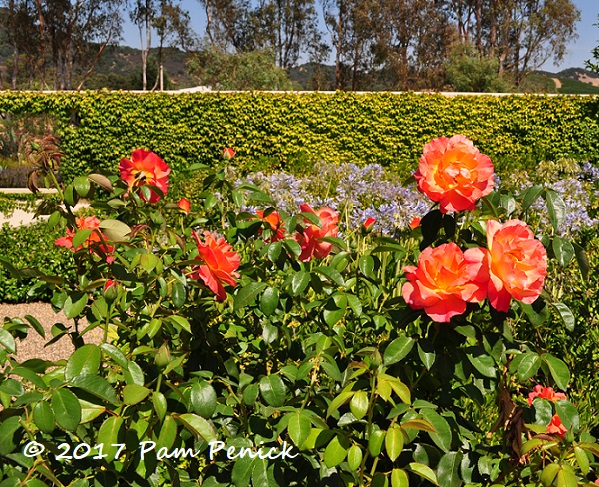
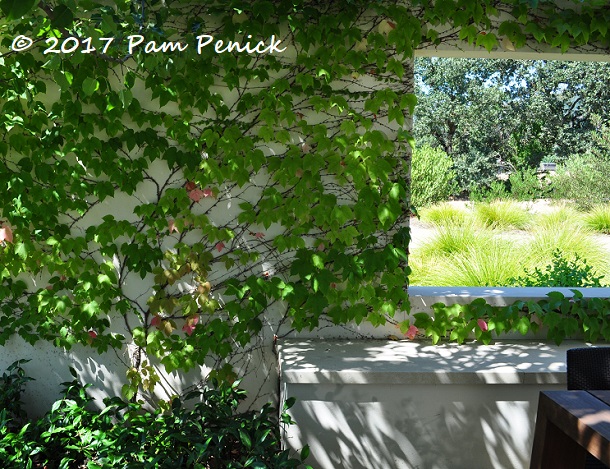
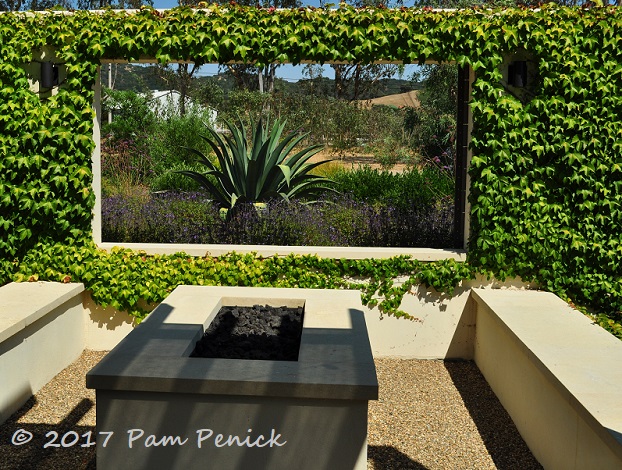
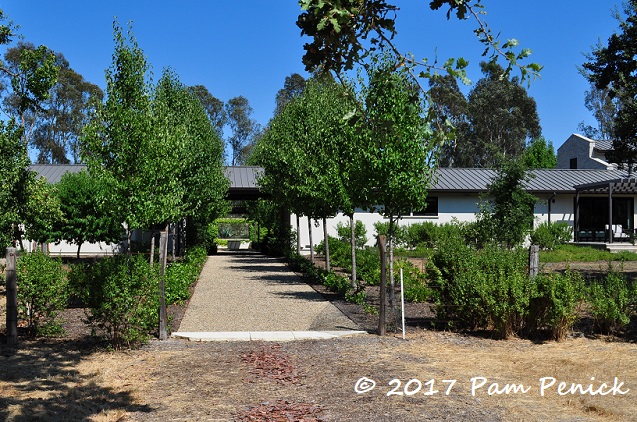
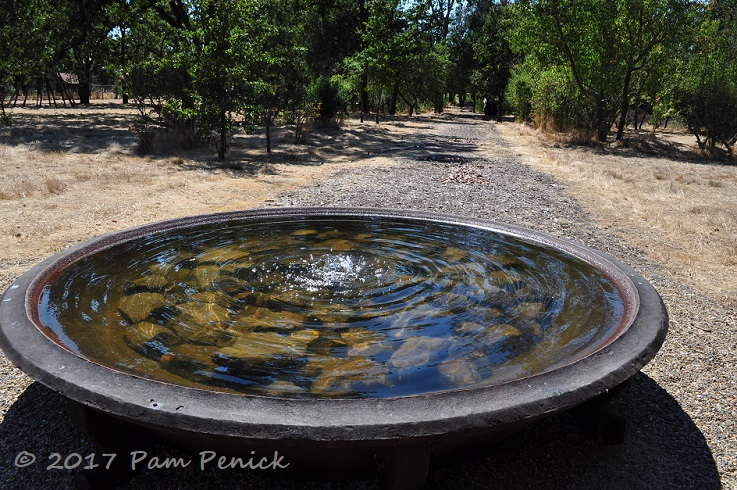
Oh, my, the framing here is really effective, and some very interesting formalism. I hope I’m not overstating the case when I say that people like you and me, Pam, tend to sit on opposite sides of a great and congenial divide — are we micro plant geeks or macro landscape nerds? or both?! — but this kind of room-division design, while not built on the most exhaustive and novel of plant selections, really appeals to the micro geek in me. A very nice method for highlighting the individual quirks of the species, planted mostly en masse or as barriers, while making them better companions to live amongst.
Glad to hear Marilyn’s garden has gone unscathed. For some residential properties, in particular, it was all down to a chance of the die. Very depressing, as a resident in fire country, to realize this is just the tip of the iceberg and probably the beginning of a very destructive climactic era.
Thanks for your thoughtful comment, Saurs. I definitely come down on the side of macro landscape nerd. I often surprise people by saying I’m not really a plant person — by which I don’t mean that I don’t love plants, because I do, but that I’m not an obsessive plant collector. I adore the big picture as well as the vignette. I also love the seasonal changes and *aliveness* of the garden, which keeps me from being a minimalist, although I admire modern design.
But I digress. 🙂 As you rightly noted, this garden relies on a few species of massed plants and strong hardscape bones for its impact. And I like your point about how the design highlights the interesting quirks of each species of plant. It does, and it’s very nicely done. –Pam
And I’m sorry about the wildfire worry. I share it here in Central Texas too, as well as concern about future drought. —Pam
I have to confess that kangaroo paw is one of (many) warm-climate plants I wish wish wish I could grow. Great in the garden, and I imagine it makes an excellent cut flower. Am I right about that?
I don’t know because we can’t grow it here in Austin either! The nurseries often tempt us by carrying it in spring, but it just doesn’t like our sauna-like summers and melts away. I covet it as much as you do, Helen. —Pam
You can buy the kangaroo paw at the florist. I remember them from the flower club demonstrations when I lived in Porterville.
Lovely! Those window cut-outs are perfect, or maybe I should say that the plantings outside the windows were perfectly planned.
Both! Framing does remarkable things for a garden. —Pam
Brilliant to have window cutouts that can be closed. And those kangaroo paws en masse are very dramatic. Quite a big difference between the feel of the inner and outer areas.
The windows and their framed views are wonderful, especially at that size. And yes, the inner and outer gardens are very different and reflect the water issues of that region. Marilyn has a well, but the water is high in boron, which can harm many kinds of plants (but not, apparently, grapes). So she trucks in water, which she stores in holding tanks and uses to irrigate the more delicate inner garden. The outer garden requires much less water and gets by with well water. —Pam
I so admire this type of garden from a design point of view
A little formality can make a strong design. —Pam
About the only thing I am averse to in this garden is the Agapanthus-I grew up in LA and this will remain a parking lot plant to me. Not to mention a favored B&B for snails.I struggle with plant snobbery. The framing techniques in this garden are first rate. Re: Kangaroo Paws, I am over the hill from Sonoma (in Napa) and grow them successfully, however they are not drought tolerant in my experience. I think we get trapped into thinking that every thing from the Aussies is, but that isn’t the case. I water mine deeply once a week.
I know what you mean, KS. It’s like how people here in Texas think “native” means “drought tolerant.” But I admit I’m surprised to hear that in your experience kangaroo paws isn’t drought tolerant, as it’s listed as such on websites from Sunset to San Marcos Growers, although both sites mention that irrigating during the bloom season can be helpful.
I guess it really comes back to the fact that “drought-tolerant” means “tolerant of,” and not necessarily thriving in drought. And also what constitutes drought conditions varies by region. —Pam
I’m completely smitten by that circular bubbling pool. Was there manganese mining nearby at some point? Hard from the photo to tell just how big it is… six feet across? twelve? No matter; it’s wonderful at any scale.
My understanding is that the rock crusher bowl itself is manganese, or perhaps what’s called manganese steel. This one is 7 feet in diameter, big enough to be clearly visible from the courtyard firepit, which is aligned along the same long axis. It makes a striking focal point, doesn’t it? —Pam
Pam, I just finished the Garden Design article. Both the article and your blog make me wish I was able to get an invite to this incredible garden. I must say that I actually preferred your images over the magazine’s. Way to go, Pam! Thank you for having such an outstanding blog for us.
I’m flattered, Rob. Thanks for the very kind words. I’m glad to know you enjoyed both the magazine article and my follow-up blog post about Marilyn’s lovely garden. —Pam